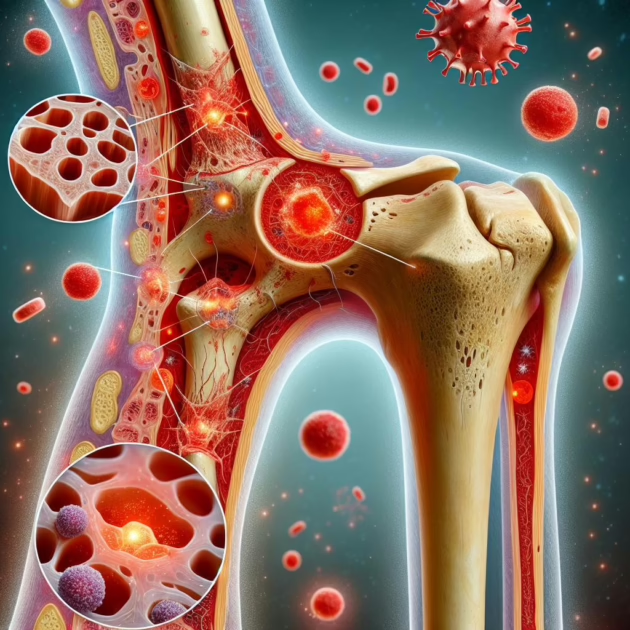Inflammation is having a moment. Some of us are consciously working to eat anti-inflammatory-enriched meals so that inflammatory diseases stay away from us later. But for many, there is increasing recognition and knowledge of inflammatory illnesses such as Celiac and Crohn’s disease, high blood pressure, and diabetes. Food can help alleviate their symptoms or exacerbate them.
If you make a purchase using the Amazon link included, we will make a commission.
Learn how to control chronic inflammation naturally. Discover effective strategies to control chronic inflammation naturally. If you’re cooking for someone who’s experiencing symptoms, you might have questions about how to do that safely. Depending on the condition, they might avoid different foods—or none at all. In order to help you navigate safely, I have also quizzed several nutrition experts and professional chefs. They have first-hand experience with inflammatory conditions and have provided their best tips and advice. This way you can cook for your friends and family with care and confidence.
What Is Inflammation
Many will think of inflammation as a swelling or redness caused by an injury or infection. But there are also harmful conditions attributable to chronic low-grade systemic inflammation in humans. These range from high blood pressure and cardiac disease to rheumatoid arthritis and other forms of arthritis. There are also digestive disorders like Crohn’s disease and irritable bowel syndrome (IBS), diabetes, and autoimmune diseases like lupus and multiple sclerosis. Chronic inflammation can affect your energy, pain, mood, and much more. The immune system becomes overstimulated for extended periods, lasting from months to even years
.
Plant-Based Diet Claims and Health Benefits
Our experts say that accommodating guests and navigating inflammatory conditions isn’t as hard as you might think. However, the ingredients that could cause inflammation differ greatly from person to person. Therefore, you shouldn’t take it upon yourself to assume what they can and can’t eat. Individual responses to specific foods can vary https://amzn.to/4h6Ee9b, so recommendations should be personalized. They should fit each person’s unique health needs and tolerances, experts note.
What to Include and What Not to Include
Once you discover what you can “stomach,” just read the labels. Some foods that trigger inflammation can be hidden in ingredient lists. For example, gluten hides in many foods you don’t suspect, including soy sauce or even fish sauce. That also means familiarizing yourself with other names for certain ingredients. If, for instance, your dinner guest is avoiding added sugar, it can be listed in 65 different ways. Sucrose or fructose are common examples.
Avoid Cross-Contamination
This is a chef’s number one rule to control chronic inflammation naturally. “Cross-contamination in a kitchen is a big problem, and most people don’t think about it at all. It can be especially challenging for those who are cooking for anyone who has celiac disease, as bread and wheat-based flour are everywhere. Advice is to treat gluten—or any ingredient that may be triggering—for your guest, like any potential bacteria-carrying ingredient. And that’s important because I’ve been in places where people have been in and out of the bathroom within 20 minutes due to cross-contamination. Wash your hands all the time, and if you use one utensil, don’t dip it into another bowl. Keep bread away from everything else. If someone has a specific allergy, use a cutting board just for them.
Use Clever Swaps
For inflammatory diseases, where complex carbohydrates are preferred in the diet, like diabetes mellitus or arthritis. A small change can even be switching to 100 percent whole-grain bread or pasta to control chronic inflammation naturally. And for gluten-free options, there are simple carbs like quinoa, brown rice, and buckwheat. It was also delicious as a vegetable pot pie, substituting the pastry crust for a gluten-free panko topping. You can also toast the panko in olive oil for a delicious, crunchy topping.
Spice Things Up
The jars on your spice cabinet are more than a way to spice up dishes. Many pack anti-inflammatory benefits, too. Using flavoring spices, such as cinnamon, cloves, ginger, nutmeg, and cardamom, not only makes things more interesting and exciting but also adds flavor and inflammation benefits as well. Rosemary, turmeric https://amzn.to/4jxU0LP, and crushed red pepper also have anti-inflammatory properties. I even try adding a few crushed green cardamom pods and some chopped-up fresh ginger and cinnamon chips to my morning bowl of oatmeal.
Fresh and dry Spice is good
Whipping up a batch of cardamom- or cinnamon-spiced whipped cream to sprinkle on desserts or include some chopped-up fresh rosemary in salad dressing. Branch out your spice profile from black pepper and use natural garlic, minced onion, thyme, tarragon, basil, cilantro, etc. Cook with acids like lemon juice, lime juice, and vinegar to amplify flavors instead of salt.
Prioritize Whole Foods
The more processed your food, the more likely it is to come with traces of wheat or excess sodium and sugar. Those risks drop when we design meals around whole foods, including fruits and vegetables. Many whole foods are anti-inflammatory, like sweet potatoes, berries, avocados, beets, tomatoes, nuts, leafy greens, fatty fish, and more. These are commonly found on lists of the best foods for combating inflammation.
For an easy weeknight meal, one option is baked sweet potatoes topped with black beans, salsa, and cheese. Or if you usually serve roast beef or pork at a dinner party, change it up and prepare a side of salmon. A massaged kale salad would be a fine addition to any meal, casual or fancier.
Do not forget to review the inflammation supplements if you use them. This one is very popular among a lot of people all over the world. https://amzn.to/40SsPmD. Read more: https://www.homecleanfood.com/blogs-food-health-and-safety/

